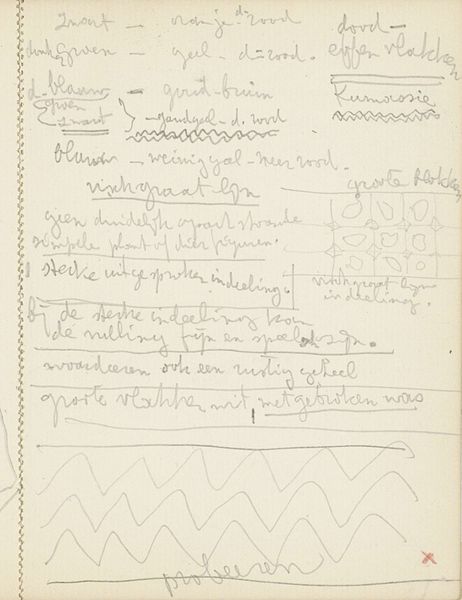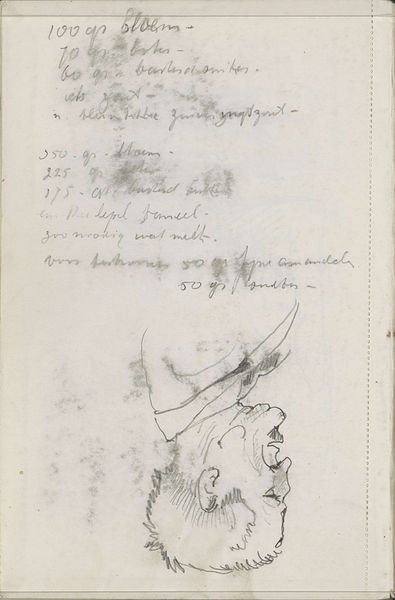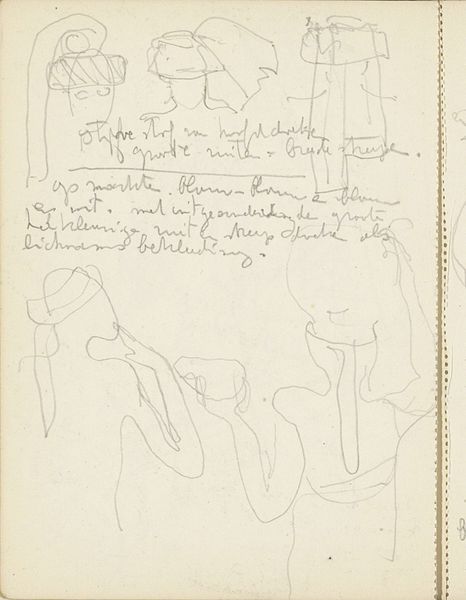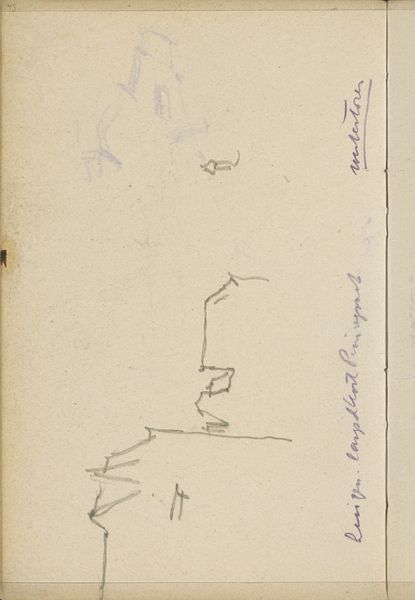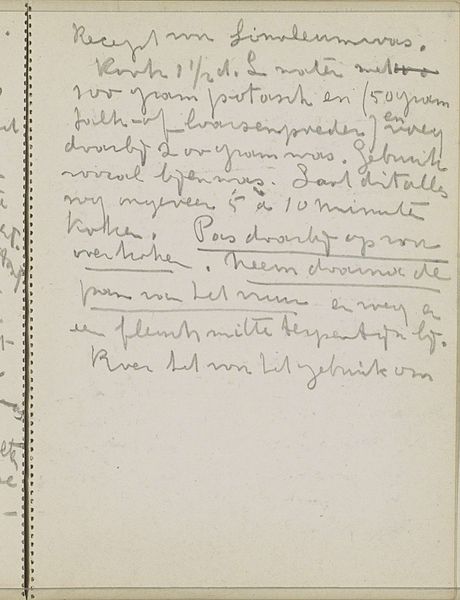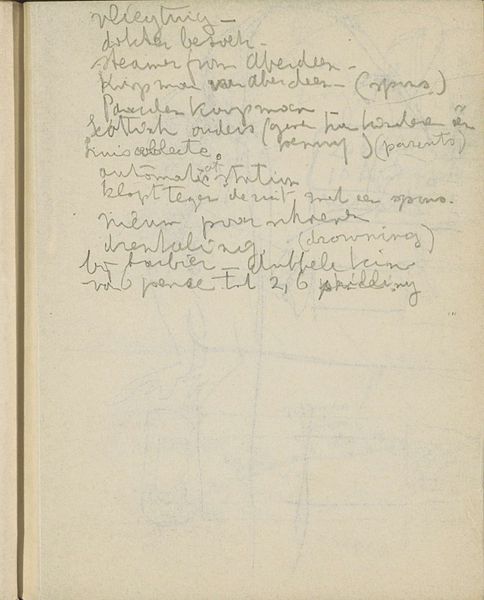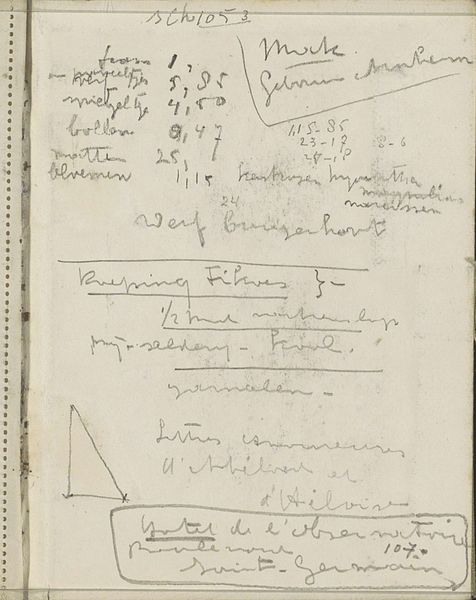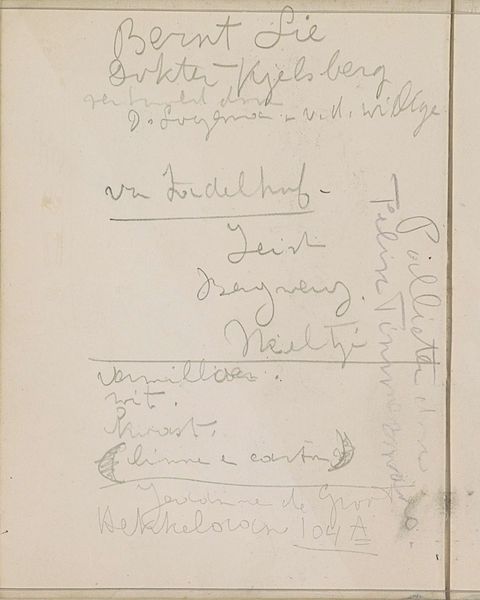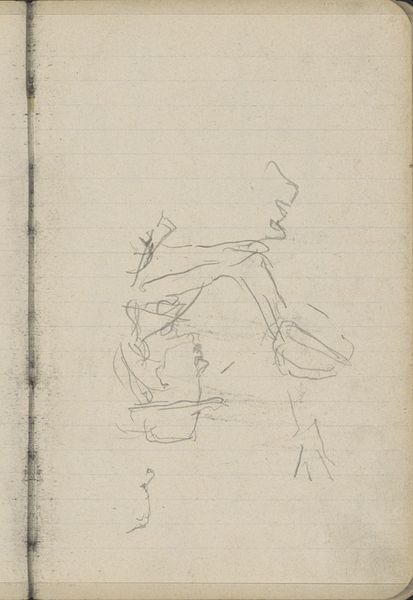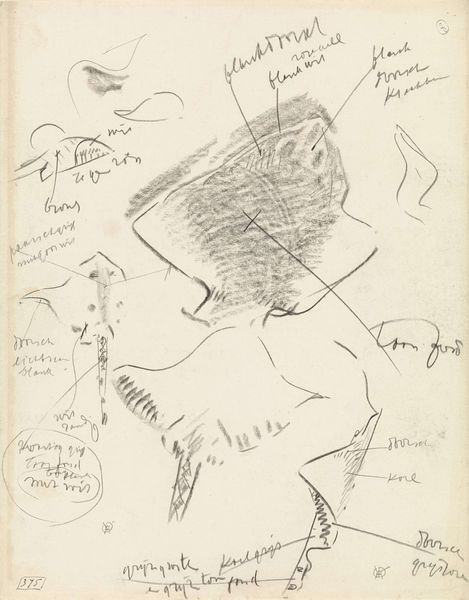
drawing, pencil
#
portrait
#
drawing
#
hand written
#
hand-written
#
pencil
#
abstraction
Copyright: Rijks Museum: Open Domain
Curator: First impressions, what does this preliminary drawing evoke in you? Editor: A ghost of a person. Faint, like a half-remembered dream, yet present enough to be arresting. There’s a softness to the graphite, almost a sigh. Curator: It's currently held at the Rijksmuseum. The title translates to “Head and lips of an African man.” Though undated, this work in pencil is placed between 1916 and 1945. We know little else about the artist or sitter. Editor: So much unknown then, almost anonymous. That scribbled text above the figure—the artistic process in flight perhaps? Curator: Possibly notes for later use, preliminary thoughts related to color or composition... or something else. The act of portraying a face is often linked to power. Consider who had the means and social power to create portraits of whom, during that period. What biases might shape such work, especially ethnographic portrayals? Editor: The soft, unfinished quality fights against that idea of "power" a bit, don’t you think? It feels intimate, a stolen moment, almost… vulnerable. Despite the time passed, I feel a pull, a question in the lines themselves. Curator: Indeed, art and its impact often resists simple categorisation. Its social impact is nuanced, complicated. We have to question the gaze inherent in these representations and consider historical context. This period coincides with intense debates about colonialism. The portrayal could participate, or indeed subtly protest these viewpoints. Editor: I think I get it, you are not saying this portrait IS something, rather suggesting the way it exists in society. As in the picture has something to "do". Not merely something to "be". Curator: Exactly. Art functions. Even through these subtle traces on paper, dialogues continue and we reimagine art's place in the social narrative. Editor: Very interesting! Thank you for providing these perspectives.
Comments
No comments
Be the first to comment and join the conversation on the ultimate creative platform.
